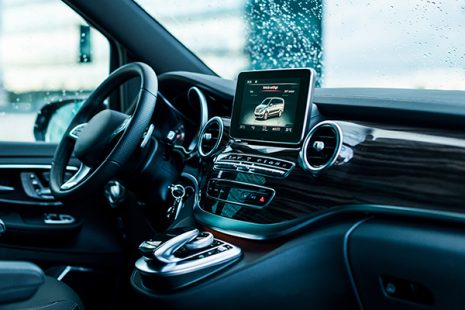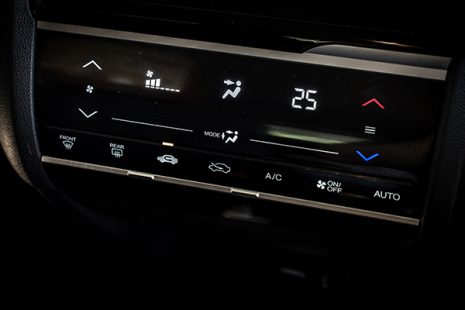The Evolution of Automotive Interiors
Ten years ago, visitors to an automotive tradeshow would have seen dashboards loaded with dials, knobs and mechanical buttons — interactivity and driver/passenger engagement were still futuristic ideas. Human machine interfaces (HMIs), however, are now taking over car interiors with automakers and tier 1 manufacturers implementing smart interfaces and advanced technology platforms. And the transformation from mechanical to electronic HMI controls promises to revolutionize the driving experience.
Voice controls, touch-sensitive surfaces and wireless communication are just some of the capabilities replacing mechanical interfaces. In the not-so-distant future, windshields might even be used as heads up displays, showing traffic updates, weather reports and other information (Robotics & Automation News, Oct. 19, 2017). In short, HMI capabilities are growing increasingly sophisticated, and the latest marketing research forecasts the in-car electronics market to grow to $61.5 billion by 2020 (Telematics Wire, Sept. 18, 2018).
A Living Room on Wheels?
 Because the conveniences of smart devices and the internet of things have become ubiquitous, people expect the same experience in their cars. Therefore, in their effort to meet the market’s expectations and remain competitive, automakers are connecting cars to the internet and providing smart user interfaces like those on consumers’ devices, in their homes and at work. In short, a car interior is becoming an extension of a person’s living room or office.
Because the conveniences of smart devices and the internet of things have become ubiquitous, people expect the same experience in their cars. Therefore, in their effort to meet the market’s expectations and remain competitive, automakers are connecting cars to the internet and providing smart user interfaces like those on consumers’ devices, in their homes and at work. In short, a car interior is becoming an extension of a person’s living room or office.
Furthermore, in order to differentiate themselves in the marketplace, many automakers are replacing mechanical knobs and buttons with capacitive user interfaces, including touchscreens that are customizable for numerous functions, such as infotainment, GPS and comfort settings. And because capacitive interfaces will be used for so many functions, designs can include a wide range of sizes, materials and architectures.
Also, many automakers are using HMI to maximize physical comfort and provide sleek, cutting-edge aesthetics. Ultimately, automotive HMI technology will give drivers and passengers an experience as immersive as their smartphones, offering a convenient—even luxurious—experience with features, such as:
- Physical comfort (seat position, interior temperature)
- Wireless communication
- Touch interfaces
- Superior lighting and sound systems
- Internet/cloud connectivity
- Contemporary aesthetics
Self-Driving Cars and HMI
The development of autonomous vehicles is also pushing the development of HMI in interior electronics. When self-driving cars become more widespread and riders are free to do other tasks, HMI will enable them to teleconference, shop and work online, communicate wirelessly, and more — all while they travel from point A to point B. And this future is coming ever closer, with many experts expecting to see significant developments in 2019 for driverless technology (engineering.com, Jan. 15, 2019).

The Molex Advantage
Anticipating hypergrowth in dashboard sophistication, Molex has positioned itself at the forefront of innovation for HMI in car interiors. Our team is ready to offer customers early-stage design support and will tackle even the most cutting-edge car interior requirements with innovative technologies. We leverage in-depth experience to develop robust capacitive touch films and other printed electronics solutions for integration within HMI.
Through our collaborative process, Molex engineers use their expertise to implement every technical advantage available to deliver an effective solution. From design concept through mass production, the goal of our holistic approach is to ensure the best possible performance of the entire user interface. Whether the needs are for superior quality or for cost-effective solutions, Molex’s design flexibility can deliver exactly what our customers envision for their HMI designs.